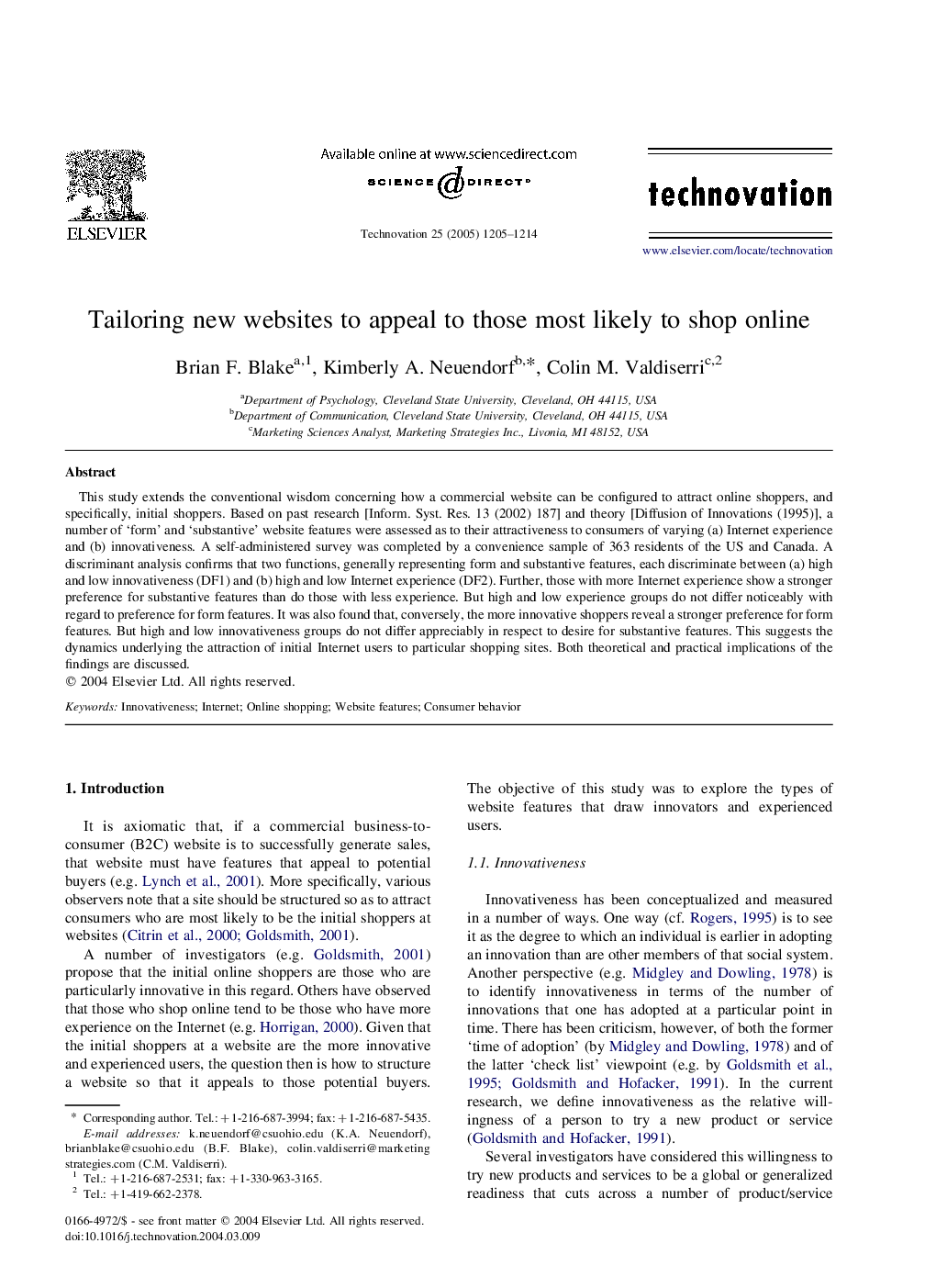| Article ID | Journal | Published Year | Pages | File Type |
|---|---|---|---|---|
| 10495028 | Technovation | 2005 | 10 Pages |
Abstract
This study extends the conventional wisdom concerning how a commercial website can be configured to attract online shoppers, and specifically, initial shoppers. Based on past research [Inform. Syst. Res. 13 (2002) 187] and theory [Diffusion of Innovations (1995)], a number of 'form' and 'substantive' website features were assessed as to their attractiveness to consumers of varying (a) Internet experience and (b) innovativeness. A self-administered survey was completed by a convenience sample of 363 residents of the US and Canada. A discriminant analysis confirms that two functions, generally representing form and substantive features, each discriminate between (a) high and low innovativeness (DF1) and (b) high and low Internet experience (DF2). Further, those with more Internet experience show a stronger preference for substantive features than do those with less experience. But high and low experience groups do not differ noticeably with regard to preference for form features. It was also found that, conversely, the more innovative shoppers reveal a stronger preference for form features. But high and low innovativeness groups do not differ appreciably in respect to desire for substantive features. This suggests the dynamics underlying the attraction of initial Internet users to particular shopping sites. Both theoretical and practical implications of the findings are discussed.
Related Topics
Social Sciences and Humanities
Business, Management and Accounting
Business and International Management
Authors
Brian F. Blake, Kimberly A. Neuendorf, Colin M. Valdiserri,
